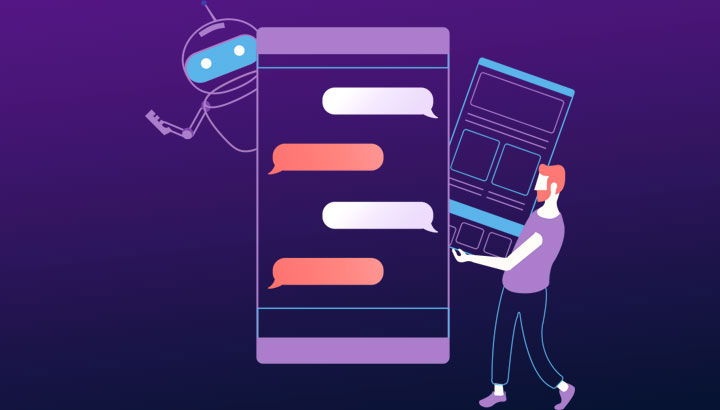chatbots are a rage across Enterprises of all sizes – and why not – if we can get every human a Robot that will take over their mundane tasks; it will indeed drive productivity. Early adopters are today seeing a massive return on investment in their chatbot initiatives. It has delivered better experiences at lower costs and have set the stage for increased adoption. A recent study has revealed that 40% large businesses will implement intelligent assistant bot in 2019. Another report by Juniper® predicts that bots will be responsible for cost saving of $8 billion by 2022.
At Streebo, we have rolled out a range of Bots for customers, and we have also deployed bots within our organization, that we are using across sales, marketing, and HR systems. Though a decade of experience in building apps, we have gained a lot of insight and learnings. So, hear it from our experts,

7 Best Practices
- Ease of Training your Dragon (chatbot) – The right kind of chatbot technology platform allows the IT team to roll-out a chatbot with ease and lets the Line of business train the bot. We have seen too many projects wherein high-end AI developers from large SI partners are brought in to build a bot. In such endeavors, both the parties are highly dependent on IT to build the bot and eventually manage and train it – this results in high cost of roll-out and management of the Bot and thus a low ROI. Why – because training the Bot is an iterative process and is fundamental to an Artificial Intelligence embedded bot. Hence, pick the right technology stack and a team that will make it easy and cost effective to build, manage and train your chatbot.
- Choosing the most appropriate use-cases – for the transition is key to your initial success and building a powerful ROI. It is best to analyze the user behavior over the web and mobile properties to build an FAQ list for your bot roll out. Also, for customer service Bots an analysis of your call center data will yield the most common questions and tasks that should be automated first.
- Picking the Right audience “Targeting the Transient User” – Our experience with multiple roll-outs is that the Bot is most effective with a transient audience. For instance, a prospect visiting your site or app for the first time will find it effective and easier to interact with a Bot rather than with your site. Similarly, a new employee is more likely to use chatbot interaction rather than a long-serving employee who is well acquainted with the user interface of your existing legacy systems. Hence, the first choice of chatbot rollout should be for transient audiences – the folks that are not regular users of your current systems.
- Building Transactional Bots – This is a common Pitfall wherein a lot of our clients started by making simple FAQs that return just content or static information. It is nothing more than a glorified search. The next step is to make the Bot smart enough to give meaningful information and execute repetitive tasks easily. For this, the bot must have access to backend information. Backend integration allows the bot to fetch and update data/content, thus making it a transactional and an intelligent bot. Our advice – look for a chatbot Technology Platform that lets you easily build, manage and train a Bot and easily wire it to your legacy backends, system, and process.
- Reduce your dependency on IT – Pick a platform that is low-code/ no-code. It will allow both LOB and IT to collaborate and rollout a Bot. While the domain knowledge and sponsorship are with the Business team; the IT team members are responsible for the rollout. Thus, a good chatbot technology platform will let teams collaborate and work easily with each other. Also, Bot development should require minimal or no coding. It permits the Line of Business to participate in managing and training the bot iteratively.
- Think Security and Governance to avoid rogue bots. A rogue Bot will start disseminating unauthorized information. As Bots will get pervasive and if there is no central mechanism to manage their security and authorization, expect to get reports of data leaks. An Ideal chatbot Platform should allow disparate business teams to build bots. It should give IT a centralized mechanism to govern their security and authorization thus giving tight control of information that will be managed by the Bot.
- Analytics and measure results – Like they always say,”If You Can’t Measure It, You Can’t Improve It”. Invest in a technology platform can easily measure and monitor the response of Bots. A good analytics engine will allow you to drill down to individual conversations and iteratively tweak your bot to improve response on subsequent interactions.
Streebo is a digital transformation company, headquartered in Texas, USA, with a client base that includes medium and large enterprises from across the globe. Leveraging IBM products like IBM Digital Experience Manager and IBM Watson Assistant bundled with chatbot Builder, Streebo helps Enterprises modernize their apps, integrate chatbot on the web, mobile and other channels like Facebook Messenger, Slack and WhatsApp to name a few. Streebo is changing and modernizing the way enterprises communicate and is helping them through their digital transformation journey.




